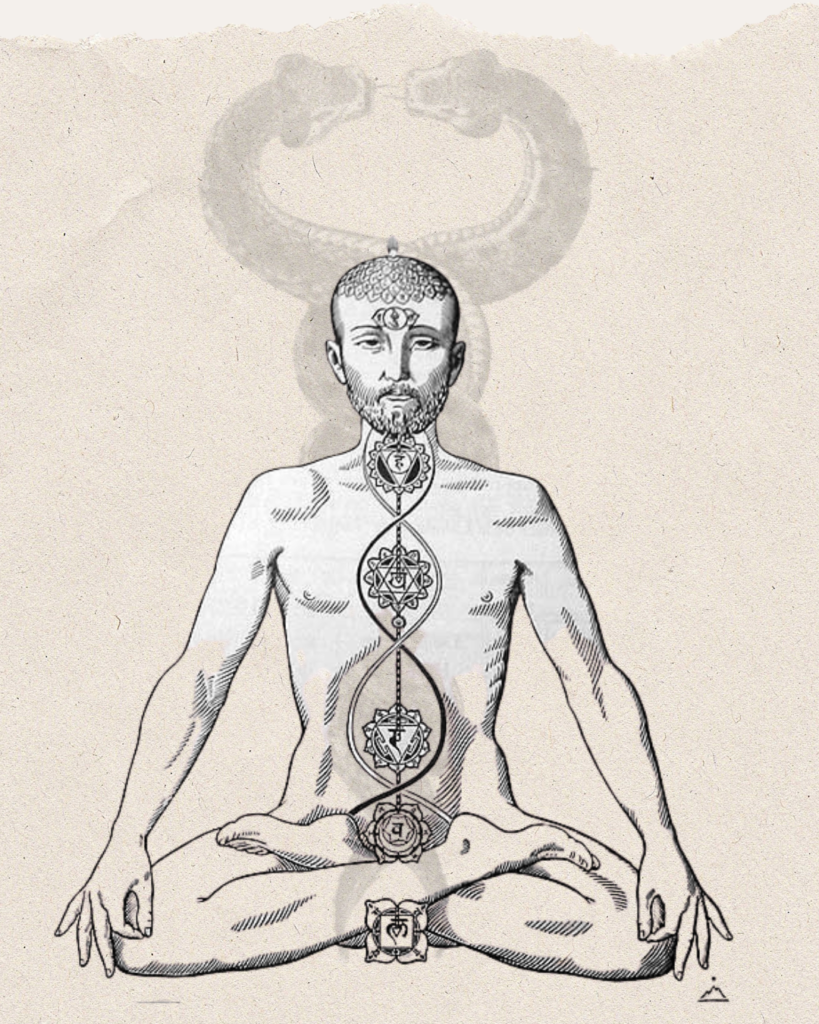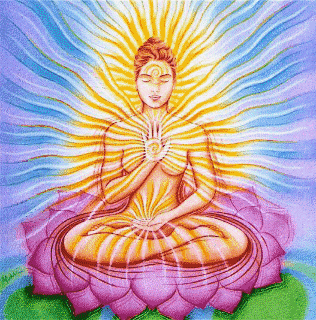Kundalini Yoga
Origin and philosophy
Kundalini Yoga is the practice of awakening our higher self through the transformation of potential energy into kinetic energy. It is a type of tantric yoga that deals with the Kundalini Shakti, the six spiritual energy centers (Shat Chakras), the Nadis channels, the awakening of the dormant Kundalini Shakti and its union with Lord Shiva in the Sahasrara Chakra at the top of the head. This is an exact science. This is also known as Laya Yoga, which is considered a form of Raja Yoga. The six centers are pierced (Chakra Bheda) by the passage of the Kundalini Shakti to the top of the head.
The elemental Consciousness of Kundalini Yoga is to remove all inner conflicts and release traumas and karmas. It is a science for strengthening your radiance and developing awareness to give you a broader life and greater capacity.

Thus, Kundalini Yoga involves a whole range of Yoga techniques that mobilize pranic energy, creating conditions for the flow of Kundalini energy, aiming to expand and change consciousness.
"Kundala" means "coiled". Its shape is like that of a coiled serpent. Hence the name Kundalini.
One of the ways to explain what Kundalini is, is to understand it as a manifestation of the expressive force of life itself, also called Shakti, which acts to manifest the entire universe and all forms of expression of existence. In this sense, the practice of Kundalini Yoga aims at the maximum development of human potential, which, when working on this energetic dynamic of consciousness, opens up space to access and manifest the Divine identity of the human being.

Kundalini can be awakened by all forms of yoga, such as the pranayama techniques, asanas and mudras of Hatha Yogis; by the concentration, dissolution and training of the mind by the Raja Yogis; by devotion and self-surrender by Bhakta Yogis; by the analytical will of the Jnanis; by the Mantras of the Tantras; and by the grace of the Guru(Guru Kripa) through touch, sight or mere Sankalpa. However, its ascent can take many years with practices that are not exclusively designed for this purpose. But the tradition called Kundalini Yoga, which has been preserved and kept secret for more than 7,000 years, can be simple and quick to the point if practiced correctly.

A master of this tradition called Yogi Bhajan came to the West in the late 1960s with the aim of teaching Kundalini Yoga, defying the rule of teaching the science publicly. The ancient scripture said: “He who teaches this science openly will die on the next sun”; but Yogi Bhajan persisted in his purpose, transmitting this knowledge to all who sought it. Through Raja Yoga, Kundalini Yoga was handed down to the lineage of one of the 10 Gurus of Sikh philosophy, Guru Ram Das, making the practice available to the values of this Sikh Dharma consciousness which means “the path of the student”, a path to becoming pure, full of integrity, truth and consciousness. As Yogi Bhajan was a Sikh and a disciple of Guru Ram Das, he brought this knowledge as it was taught to him, expanded with the science of Naad Yoga, which is the science of sound vibration, an essential part of the teachings of Sikhism in that it allows the development of its entire structure with the impact of sound vibration.
It is important to note that although there is this connection between Kundalini Yoga and Sikh Dharma, the practice of Kundalini Yoga is accessible to people from various spiritual traditions and is not limited to Sikhism. Each practitioner has the freedom to incorporate these practices according to their beliefs and personal spiritual journey.
